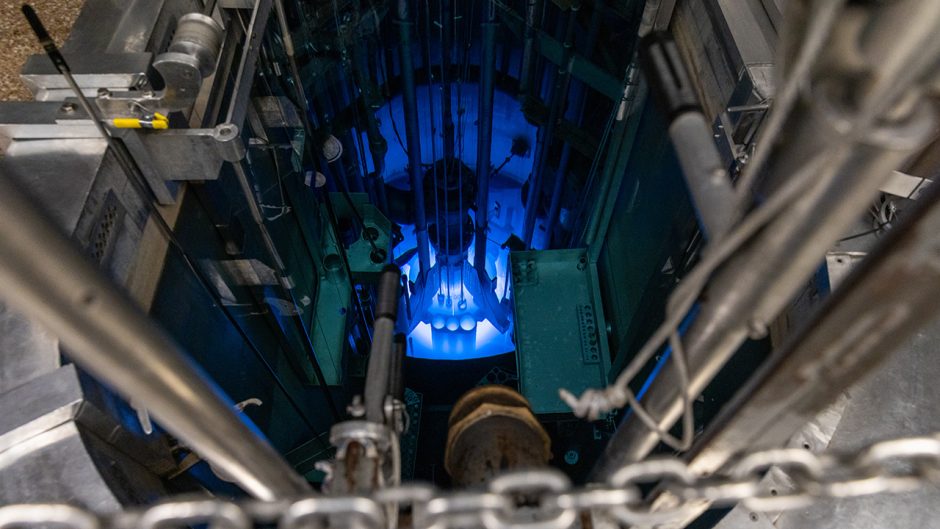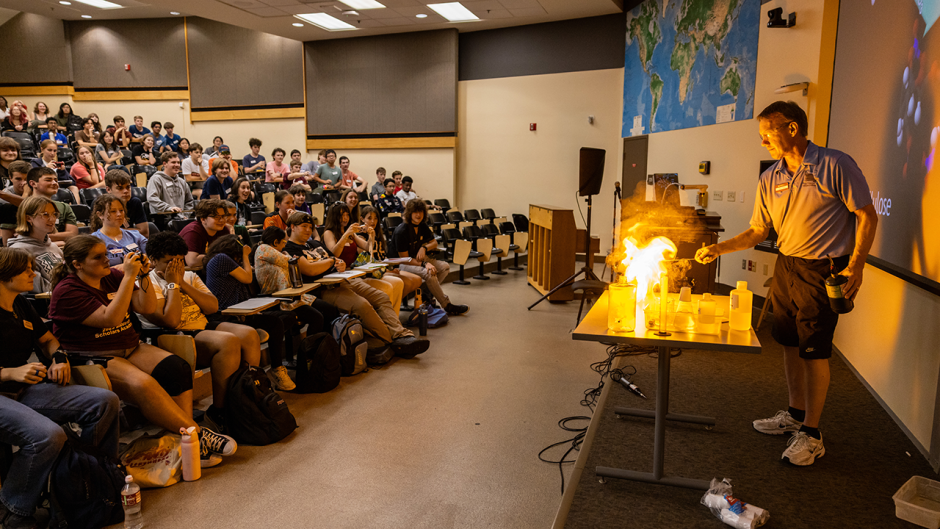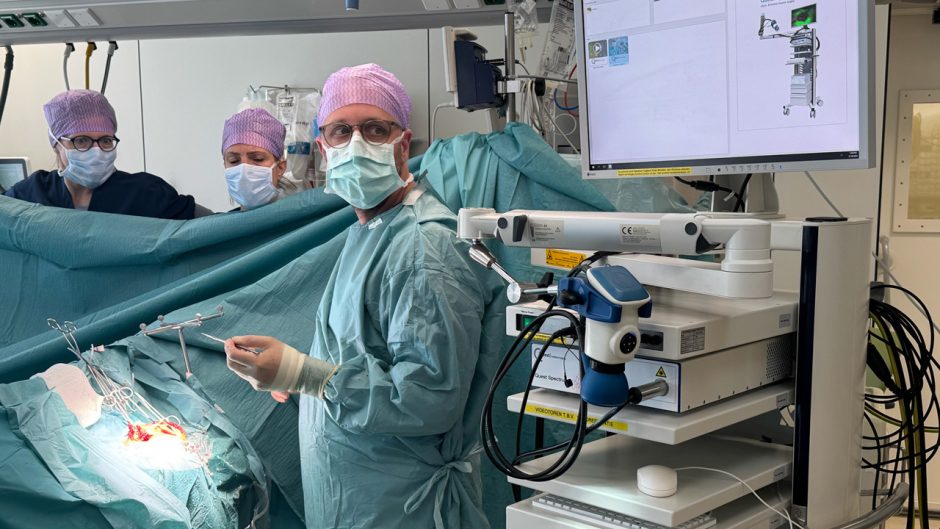March 17, 2022
Contact: Stephanie Fleming, 573-882-8353, sfleming@missouri.edu
As the state’s largest and most comprehensive university, the University of Missouri’s reach and impact extends far beyond its campus boundaries. According to a new economic impact report, that reach generated $5 billion for the state’s economy in fiscal year 2021, supported nearly 50,000 jobs and contributed $281.8 million in state and local taxes.
“The University of Missouri contributes to the overall vitality of our state by educating tomorrow’s workforce, conducting innovative research and providing outreach to the citizens of Missouri by sharing our knowledge base,” MU President Mun Choi said. “With a 25-to-1 return on investment for Missouri tax payers, an investment in MU is an investment in our state.”
The study was conducted by Tripp Umbach, a nationally recognized firm that has completed more than 500 economic impact studies for clients across the globe. The firm analyzed the economic value generated by MU’s research, operations, service and expenditures throughout the state of Missouri in Fiscal Year 2021, which ran from July 1, 2020, to June 30, 2021. The impact analysis measured MU Extension, academic medicine, research, athletics and alumni. The new report focuses exclusively on MU’s impact and follows another report released earlier this year that detailed the economic impact of the UM System.
Overall highlights of the MU study include:
- $5 billion generated in economic impact by MU
- 49,937 direct and indirect jobs, both full-time and part-time
- $281.8 million generated in state and local taxes
- $988.8 million economic impact generated by MU’s research enterprise
- $2.1 billion generated in economic impact by MU Health Care and academic medicine
- $319.1 million generated in economic impact by MU Athletics
Nearly 7,000 students graduate each year from MU, and each graduating class provides essential contributions to the state’s human capital and workforce needs. There are more than 153,000 MU alumni living in Missouri, and the total impact to the Missouri economy associated with their in-state spending is estimated to be $26.8 billion, which is in addition to the university’s $5 billion impact.
“At the University of Missouri, we pride ourselves on preparing students for the global economy by providing an outstanding education and career readiness,” said Latha Ramchand, MU provost and executive vice chancellor for Academic Affairs. “Each year approximately 64% of our graduates remain in Missouri and contribute to the state’s economy in meaningful ways.”
Additionally, Tigers were noted for their community impact through charitable giving and volunteerism. The university provides countless opportunities for faculty, staff and students to serve the community through institutional partnerships, programs and service-learning projects. Tripp Umbach estimated MU employees and students donated $11.2 million to local charitable organizations and contributed the equivalent of $8.9 million in volunteer time.
MU Extension, which works with citizens in all 114 counties of the state and the City of St. Louis, had a $117.6 million economic impact in FY21. Each year, more than 2.5 million Missourians turn to MU Extension to connect with the knowledge base of the university and its resources in order to manage issues of local concern and improve their quality of life. MU Extension has a nearly 200-year history in agriculture. In 2021, services were expanded to address issues in health care, broadband connectivity, business development and environmental science. Tripp Umbach estimates that for every dollar invested in MU Extension, $13 of public value is returned. MU Extension’s Business Development Program also achieved a massive return on investment, returning $133 in economic value to clients over the past three years for each $1 invested.
“The statewide programs offered by MU and MU Extension serve to increase economic opportunity, increase educational access and promote the health and wellbeing of all Missourians,” said Marshall Stewart, chief engagement officer for UM System and vice chancellor for Extension and Engagement. “MU is committed to improving the lives of every Missourian, regardless of where they live.”
MU’s research enterprise impact totaled nearly a billion dollars in FY21, according to the report. With $988.8 million generated in economic impact, the university’s research supported more than 6,800 jobs and produced $55.2 million in state and local taxes. The commercialization of research and medical innovation within Missouri executed by MU and its collaborating partners, employment of world-class researchers and the attraction of federal research funding leads to significant additional economic expansion and employment.
Recent highlights from MU’s research include the grand opening of the Roy Blunt NextGen Precision Health building, ushering in a new era of leading-edge research in a facility that unites researchers, clinicians and industry partners under one roof. Last year, the university also announced its most ambitious research investment strategy, MizzouForward. The strategy pledges a $1.5 billion investment over 10 years to support the university’s research and education missions.
MU’s academic medicine sector generated $2.1 billion in FY21 and supported 21,789 jobs throughout the state. Academic medicine comprises MU Health Care—the largest health system in Mid-Missouri—as well as the state’s only College of Veterinary Medicine, the Sinclair School of Nursing and the School of Health Professions.
Fans of the Mizzou Tigers rally to support student athletes in 20 sports year after year. The Tigers are a nationally recognized, Division I athletic franchise that generated $319.1 million in economic impact while supporting 3,591 jobs and contributing $15.9 million in state and local taxes.
Primary data for the study were collected from the UM System, including capital expenditures, operational expenditures, employee figures, payroll and benefits, taxes paid to local and state governments, visitation numbers for campus events, student figures, and proportions of students who live on and off campus to accurately measure their spending in the local area. Values in the report are generated by direct, indirect and induced operational spending, capital spending, payroll, visitor spending and student spending throughout Missouri.

![062625_CEI Aerial View_email-cropped[29] (1)](https://showme.missouri.edu/wp-content/uploads/2025/06/062625_CEI-Aerial-View_email-cropped29-1-940x529.jpg)


